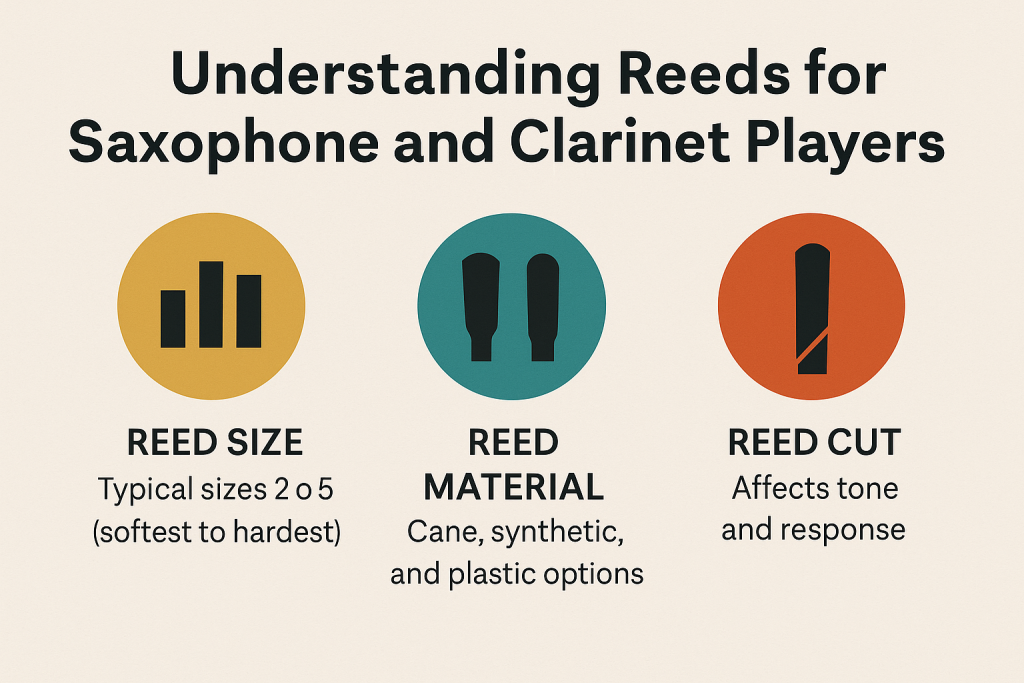Understanding Reeds for Clarinets and Saxophones
For saxophonists and clarinets, the reed is actually one of the most important parts of the instrument, not because its effect on the player or the sound overall but because the clarinet and saxophone would not make a sound (or at least not a proper sound) without it. There are many companies that make reeds and there are different styles and thickness of reeds as well. In addition, in more recent years, reed material has been experimented with to include plastic reeds and synthetic reeds.
Reed cut, reed material, and reed thickness are the three main components of how a reed sounds or plays.
Reed Size/Thickness
Typical reeds range in thickness or “size” from 2-5 with two being the thinnest and five being the thickest. The reed thickness effects the sound of the reed overall as well as ease of playability. It is often thought that thicker reeds equal better or more experienced players and in the same thought that as you advance as a player that you should use thicker and thicker reeds. This ideal while not totally without base is overall false. I personally have been playing music for about fifteen years and consider myself a professional level player. Even playing at the level I do, I typically only use 2 1/2 to 3 reeds and the thickest I have every regularly played on was 3 1/2. If my tenure as a musician isn’t proof enough I have known other musicians who have played much longer than I have and played more prolifically than I have that have also only gone up to 3 and 3 1/2. The reed thickness is more dependent on the players comfortability than it is on the players skill.
Reed Material
Reeds are most often made of cane and go through a lengthy process before getting into the hands of a musician. More recently synthetic materials and even plastic materials have been used to make reeds. These scientific advances are great for the music industry and for musicians overall as they offer the musician more options. Often these synthetic reeds and plastic reeds run a bit harder than normal reeds and for that reason I usually buy a half size under my typical thickness. In addition they do not break as easily or get worn out as easily. I personally prefer cane reeds but have used synthetic reeds in performance settings before. Sometimes I will buy synthetic and plastic reeds as “practice reeds” due to their longer life span than cane reeds.
Reed Cut
Reed cut is the final main piece that goes into a reed and it is simply how the piece of cane (or synthetic material) is literally cut. This effects how the reeds sounds and plays. Cut could be a whole conversation and post by itself and is too diverse and deep of a topic to fit into this post.
Due to their varying response, and timbre, I personally usually use different cuts, sizes, and even brands for different settings and purposes.
If you are unsure of what reed size you should be using your band teacher and/or a private lesson teacher will generally have some great advice and input.
Links
Canton Music Academy: https://www.cantonmusicacademy.com/
More About Reeds: https://www.yamaha.com/en/musical_instrument_guide/saxophone/mechanism/mechanism002.html#:~:text=The%20reed%20is%20made%20of,reeds%20are%20exactly%20the%20same.






